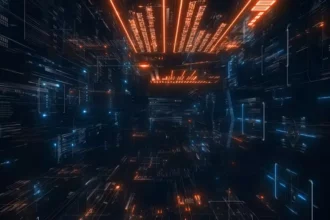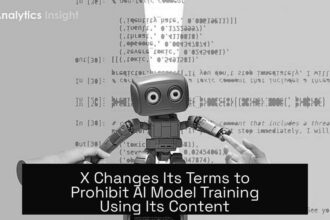Table of Contents
ToggleMachine Intelligence and Human Judgment
Machine intelligence’s impact on human judgment varies by context, skill level, and task nature, shaping economic inequality and productivity in complex ways. AI can both widen and reduce income gaps depending on how it interacts with human skills. Understanding this dynamic is crucial to assessing AI’s societal effects.
AI’s Dual Role in Inequality
AI has the potential to reverse or worsen inequality trends driven by prior technology advances. Its effect largely depends on how it influences wages and job security across industries. If AI erodes middle-class job security, inequality may deepen further.
- Widespread job insecurity can collapse the middle class.
- Increased inequality leads to economic instability.
- AI’s design and deployment strategies significantly affect these outcomes.
Skill Bias in AI Adoption
Since the 1960s, research shows technology favors skilled over low-skilled labor, known as “skill bias.” AI follows similar but nuanced patterns. Two prominent studies illustrate this:
| Study | Findings | Implications |
|---|---|---|
| Aidan Toner-Rodgers (MIT) | Top scientists’ output increased by 81% with AI; lower-skilled scientists saw little change. | AI amplifies income disparity favoring highly skilled workers. |
| Erik Brynjolfsson et al. (Stanford) | Lower-skilled call center workers’ productivity rose 34%; high-skilled workers saw minimal change. | AI can boost low-skilled productivity, potentially reducing income gaps. |
Judgment Versus Prediction in Task Performance
The distinction between judgment and prediction explains why AI benefits vary by worker skill and job type. Judgment involves evaluating outcomes and their value, while prediction estimates probable results.
- In judgment-heavy roles (e.g., scientific research): AI enhances predictions, but human judgment decides which AI outputs to trust. Highly skilled workers leverage judgment to gain disproportionate benefits.
- In prediction-heavy roles (e.g., call center tasks): AI matches or exceeds human prediction. Low-skilled workers gain more as AI substitutes prediction components, narrowing productivity and income differences.
Thus, the more a job depends on judgment, the more AI rewards high skill. Conversely, in prediction-focused roles, AI boosts lower-skilled workers more, shrinking wage gaps. This dynamic influences wealth distribution across sectors and workers.
Geographic Wealth Distribution and Economic Power
AI’s impact also depends on regional factors. Areas rich in skilled workers, strong research institutions, and advanced tech infrastructure attract most AI-generated economic benefits.
- High-value judgment tasks like medical diagnostics or strategic planning become more productive with AI, elevating worker earnings in innovation hubs.
- Regions lacking such infrastructure risk falling behind, widening global inequality.
- Resulting wealth concentrates in few cities or countries, increasing economic and power disparities worldwide.
Policy Recommendations to Balance AI Benefits
Policymakers can mitigate inequality risks and spread AI advantages by focusing on:
- Expanding access to education: Emphasize complex decision-making and judgment skills to complement AI across populations.
- Encouraging global talent mobility: Broaden distribution of judgment capacities beyond traditional power centers through knowledge exchange and migration policies.
- Incentivizing AI adoption in diverse regions: Provide funding, infrastructure, and support to diffuse AI-generated value creation more evenly.
These steps help ensure AI supports more balanced growth and reduces deepening divides.
Key Takeaways
- AI’s impact on inequality depends on interaction with human judgment and skill levels.
- In judgment-intensive tasks, AI favors highly skilled workers, widening income gaps.
- In prediction-focused tasks, AI boosts lower-skilled workers, reducing productivity disparities.
- Regional disparities in skills and infrastructure influence the geographic distribution of AI benefits.
- Policy efforts should focus on education, talent mobility, and equitable AI deployment to moderate inequality.
Machine Intelligence and Human Judgment: Who Wins the Tug of War?
Machine intelligence reshapes the balance between human judgment and prediction in work settings, but whether it amplifies inequality or promotes fairness depends on how it interacts with skills and decision-making roles. Curious how AI and human judgment play off each other? Let’s unpack this fascinating interplay together.
Artificial intelligence (AI) stirs quite the debate. On one hand, it promises explosive productivity and breakthroughs. On the other, it might deepen the income gap between skilled and less-skilled workers. Why? Because AI influences the value of judgment versus prediction differently across industries and worker types.
The Inequality Question: AI’s Double-Edged Sword
AI could either reverse or accelerate inequality trends driven by earlier technologies. One crucial factor is how it affects wages and job security across the board. Imagine technological progress wiping out middle-class stability—that’s the scary prospect.
Widening inequality may spawn social instability or economic prosperity. Which path AI takes depends largely on its impact on human jobs and income distribution. Think of AI as a wild card: Will it empower workers or concentrate wealth to a few?
Skill Bias: Who Benefits from AI Boosts?
The concept of “skill bias” comes from economists like Nobel winner Daron Acemoglu. It suggests technology tends to favor skilled workers while displacing low-skilled labor. This has held true since computers began changing workplaces in the 1960s—and AI adds a new twist.
| Study | Focus | Results | Impact on Inequality |
|---|---|---|---|
| Aidan Toner-Rodgers (MIT) | Scientists using AI for breakthroughs | Top 10% output increased 81% with AI; least skilled no change | Increased inequality |
| Erik Brynjolfsson et al. (Stanford) | Call center employees using AI tools | Low-skilled workers’ productivity up 34%; little impact on skilled | Reduced inequality |
How come these studies show opposite effects? It boils down to what kind of work is being done—prediction or judgment—and which workforce skills AI augments.
Judgment vs. Prediction: The Heart of the Disparity
Let’s break down this puzzle. Decision-making involves two parts: prediction (guessing likely outcomes) and judgment (weighing consequences and making choices). They’re not twins but cousins—both important, but AI doesn’t treat them equally.
“Improvements in machine prediction make human judgment and decision-making more valuable.” – Aidan Toner-Rodgers
For scientists hunting innovative ideas, AI generates countless predictions—possible breakthroughs—but only skilled scientists with sharp judgment pick the winners. Here, human judgment remains rare and precious. AI magnifies this gap, letting high-skilled workers soar even higher.
Contrast this with call centers. Handling customer queries mainly involves predicting the best response. AI can match or even exceed the predictions of top workers here. The judgment—deciding the relative cost of mistakes—is less critical and more evenly spread. So, AI lifts low-skilled workers by stepping in as a smart prediction helper.
In short:
- When jobs rely heavily on prediction, AI substitutes human prediction well. This benefits low-skilled workers by leveling their productivity with skilled peers.
- When jobs hinge on nuanced judgment, AI boosts the already skilled, increasing income gaps.
Does this make you wonder about your own job? Is your work rooted in prediction or judgment? Could AI lend a hand or widen the talent chasm?
Geography Matters: Where AI Wealth Grows
The battle between machine intelligence and human judgment also plays out across regions. Places loaded with skilled workers, cutting-edge research institutions, and technology hubs attract more benefits from AI-driven innovation.
Industries depending on judgment-intensive tasks—think medical diagnostics, scientific research, or strategic corporate planning—see expert productivity skyrocket, pulling income and power into innovation centers. This spatial clustering could deepen global inequality even as lower-skilled workers in other areas gain modest benefits.
Simply put, AI may promote an economic “winner takes most” scenario globally.
Policymakers: Shaping AI’s Impact Through Smart Moves
Is this inevitability? Not quite. Thoughtful policies can steer AI’s disruptive course towards fairness. Here’s how:
- Expand Education and Training: Focus on developing complex decision-making and judgment skills. This helps more people in more places use AI effectively.
- Encourage Talent Mobility and Knowledge Sharing: Spread the know-how and talent globally, not just in mega-cities or powerhouse countries.
- Incentivize AI Adoption Beyond Power Centers: Provide funding and infrastructure in underrepresented regions. This widens AI benefits and balances economic growth.
Humans still bring judgment that AI cannot fully replace. But as AI prediction improves, judgment becomes the premium skill. Societies that nurture this skill broadly gain the edge.
Summary: The New Divide Powered by AI
Machine intelligence is more than a technology; it’s a force reshaping human roles at work.
Will AI be the great equalizer or an elite’s jetpack? It pivots on judgment and prediction. Jobs that rely on prediction alone see low-skilled workers boosted by AI. Jobs requiring judgment will widen the gap, favoring the highly skilled.
Remember the scientists versus call center agents? That’s the real-world reflection.
And there’s the geography twist: AI rewards innovation hubs—those with the brains, resources, and infrastructure. This concentration of wealth could deepen geo-economic divides globally.
But it’s not all doom and gloom. Policy interventions can help democratize AI’s gains, making sure more people benefit from this revolution, not just a handful.
So next time you hear “AI versus human,” think “AI enhancing or replacing prediction, but judgment remains uniquely human and valuable.” The future belongs to those who harness both well.
One final question: In your line of work, is AI your coworker’s crystal ball or your trusted advisor? Understanding this could guide you on how to thrive in the AI era.
What determines whether AI helps low-skilled or high-skilled workers more?
The key difference is between judgment and prediction. AI substitutes for human prediction well, benefiting low-skilled workers in prediction-heavy jobs. But in judgment-heavy roles, AI helps high-skilled workers more, widening inequality.
How does AI affect income inequality differently in various industries?
In industries where tasks require strong judgment, AI boosts expert productivity and income gaps grow. In industries focused on prediction, AI narrows productivity differences and can reduce income inequality among workers.
Why might AI increase economic inequality across regions?
Regions with more skilled workers and better tech infrastructure gain more from AI’s boost to judgment-intensive work. This can concentrate wealth and power in innovation hubs, deepening global economic inequality.
Can AI improve productivity for low-skilled workers?
Yes. Studies show AI tools can enhance productivity of low-skilled workers by helping them predict outcomes and complete tasks more efficiently, raising their output and wages in some cases.
What policy steps can reduce inequality caused by AI?
- Expand education focusing on complex decision-making to boost judgment skills.
- Encourage global movement of talent and knowledge sharing.
- Support widespread investment in AI use beyond major cities and traditional power centers.




